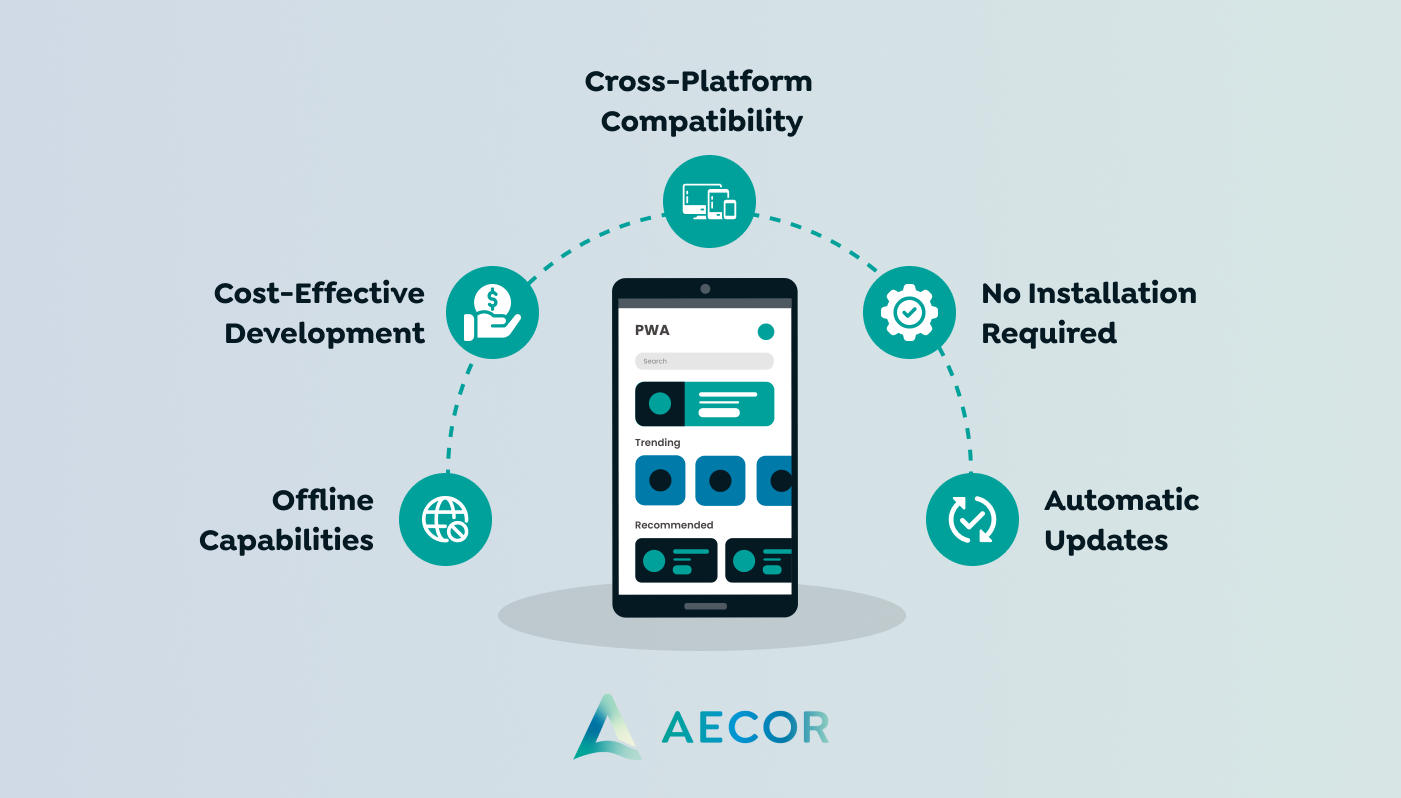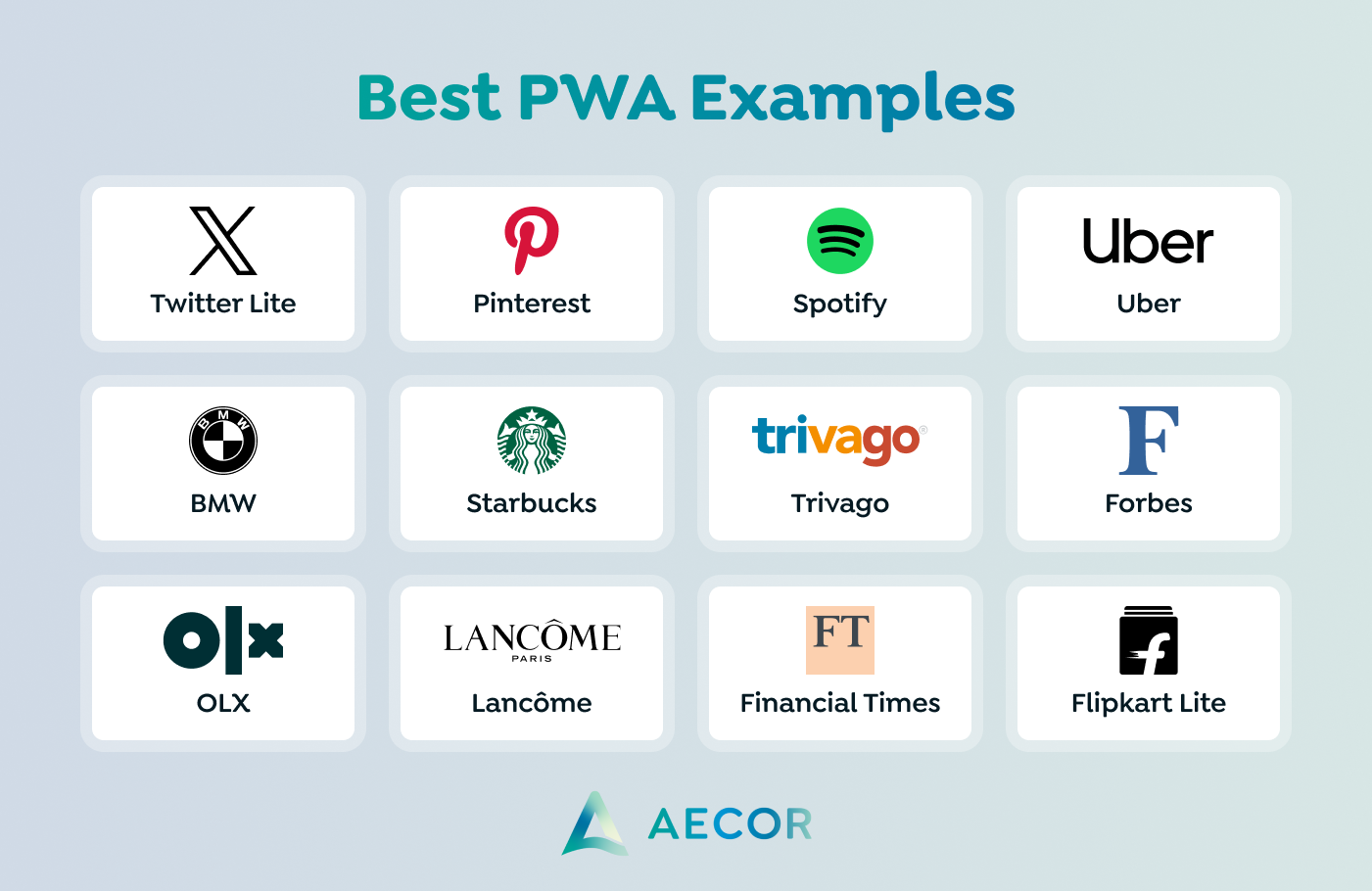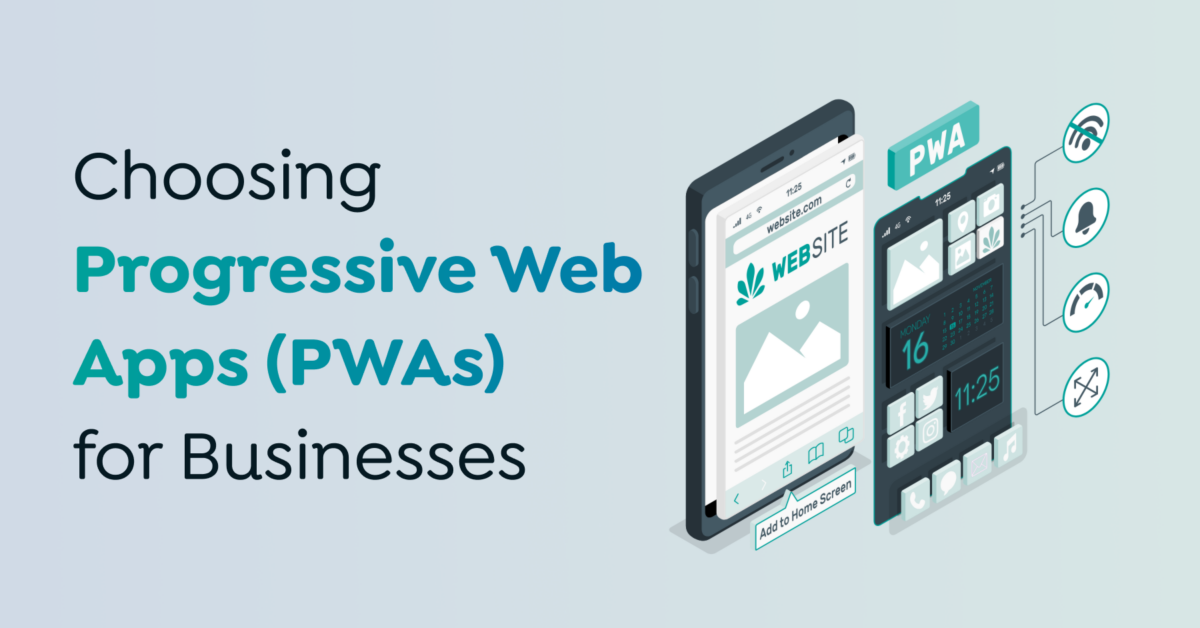In this article we will compare Progressive Web Apps (PWAs) to traditional iOS/Android apps and Hybrid apps.
This will cover the pros and cons of PWAs, focusing on the user onboarding journey, and highlight any potential adoption issues, particularly for users with fewer technical skills.
What are Progressive Web Apps (PWAs)?
A Progressive Web App (PWA) is a website that works like an app on your phone or tablet. Even though it’s a website, it feels and behaves like a regular app. PWAs are fast, easy to use, and can even work when you’re offline. They combine the efficiency of websites with the responsiveness of mobile apps, delivering a fast, reliable, and engaging user experience.

Pros of PWAs
1. Cross-Platform Compatibility:
Accessibility: PWAs can be accessed on any device with a web browser, eliminating the need for multiple versions for different platforms (iOS, Android).
Maintenance: Only one codebase needs to be maintained, reducing development time and costs.
2. No Installation Required:
Ease of Access: Users can access PWAs directly through a web URL, reducing the friction of app store downloads.
Storage: PWAs take up less storage on users’ devices as they are not fully installed apps.
3. Automatic Updates:
User Experience: Updates are seamless and do not require user intervention, ensuring all users are on the latest version.
4. Offline Capabilities:
Performance: PWAs can function offline or with poor network conditions, improving user experience.
5. Cost-Effective Development:
Budget-Friendly: Developing a single PWA is often more cost-effective than creating separate apps for iOS and Android.
Cons of PWAs
1. Limited Access to Device Features:
Functionality: PWAs have limited access to device-specific features (e.g., Bluetooth, advanced camera controls) compared to native apps.
2. Performance:
Speed: While PWAs are fast, they may not match the performance of highly optimised native apps in certain scenarios, especially for graphics-intensive applications.
3. Discoverability:
App Stores: PWAs are not listed in traditional app stores, which can reduce their discoverability compared to native apps.
4. Push Notifications:
Support: While PWAs support push notifications on Android, iOS support is limited. Apple’s restrictions mean that iOS users may not receive push notifications from PWAs, which could be a significant drawback if push notifications are crucial to your app’s functionality.

User Onboarding Journey Comparison
PWAs
- Simplicity: Users can start using a PWA immediately by visiting a URL, bypassing app stores and lengthy download processes.
- Engagement: Once a PWA is visited, it can prompt the user to add it to their home screen, providing an app-like icon for easy access. However as the process is unfamiliar to most their adoption rates remain low
- Instant Access: The onboarding process quickly reduces user drop-off rates during initial interactions.
Traditional iOS/Android Apps
- App Stores: Users are familiar with finding and downloading apps from app stores. This traditional route can enhance user trust and app discoverability.
- Installation: While the installation process involves more steps, users are accustomed to this journey, making it a familiar process despite its potential complexity.
- First-Time Experience: Native apps can provide a more immersive first-time experience with guided tutorials and onboarding screens.
Adoption Issues for Users with Fewer Technical Skills
1. Complexity of Installation:
Native Apps: The process of navigating an app store, downloading, and installing an app can be daunting for less tech-savvy users.
PWAs: Accessing a PWA is as simple as clicking a link, making it more user-friendly. However the process is unfamiliar to most.
2. Understanding Permissions:
Native Apps: Users often need to grant multiple permissions during installation, which can be confusing.
PWAs: Permissions are requested in context, reducing confusion and improving trust.
3. Updates:
Native Apps: Users must manually update apps, which can lead to fragmentation.
PWAs: Automatic updates ensure all users are on the latest version without needing to take action.
Push Notifications Consideration
Push notifications are an essential feature for engaging with users. PWAs offer robust support for push notifications on Android. However, there are significant limitations on iOS due to Apple’s current restrictions:
- Limited Push Notification Support: PWAs on iOS do not fully support push notifications. While the web push API is available on Safari for macOS, it is not yet supported on iOS. This means that users accessing your PWA on an iPhone or iPad will not receive push notifications, limiting your ability to engage with this segment of your user base.
- Service Worker Restrictions: On iOS, service workers (which enable offline capabilities and background tasks such as push notifications) have limited functionality. They are only supported when Safari is open, and background processes are terminated when Safari is closed. This impacts the reliability of push notifications and other background tasks.
- Lack of Add to Home Screen Prompt: Unlike Android, where PWAs can prompt users to add the app to their home screen, iOS lacks this feature. Users must manually add the PWA to their home screen, which can be a barrier for less tech-savvy users.
Conclusion
Transitioning to a Progressive Web App can offer significant benefits, particularly in terms of cross-platform compatibility, ease of access, and cost-effectiveness. However, it is essential to consider the limitations in terms of device feature access, potential performance issues, and notably, the restricted support for push notifications on iOS. For users with fewer technical skills, PWAs provide a more straightforward and less intimidating onboarding process, which can enhance user adoption and satisfaction.
Given that many users are more familiar with the native app download journey, we recommend conducting a pilot test with a PWA version of your current app to evaluate user feedback and performance metrics before making a full transition. By taking this approach, you’ll gain insights into how users are responding and reveal any technical challenges that need addressing.
If you would like to learn more or have any enquiries get in touch with us.







